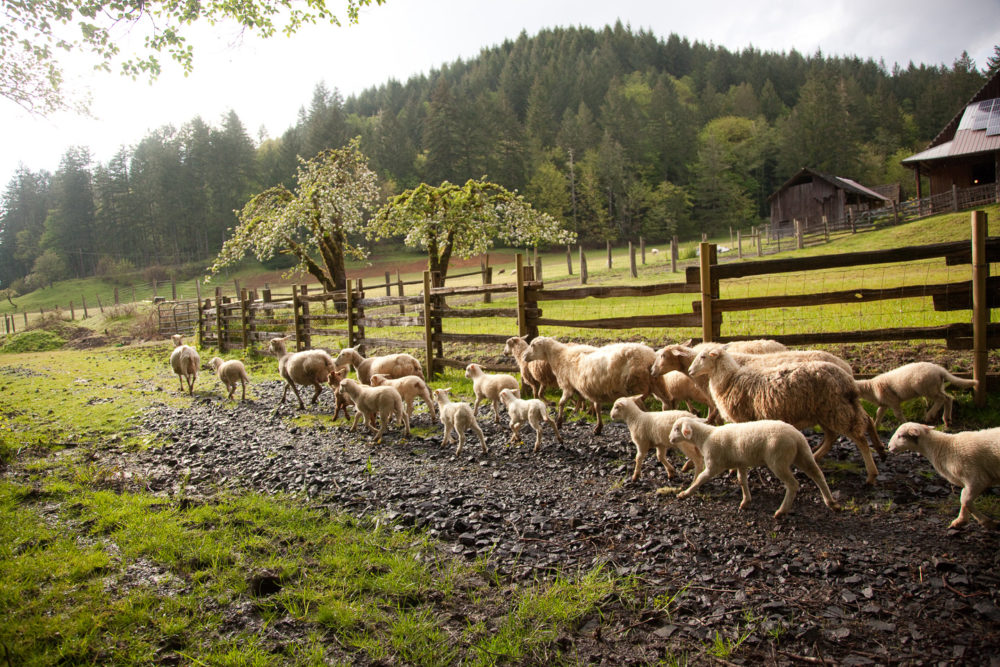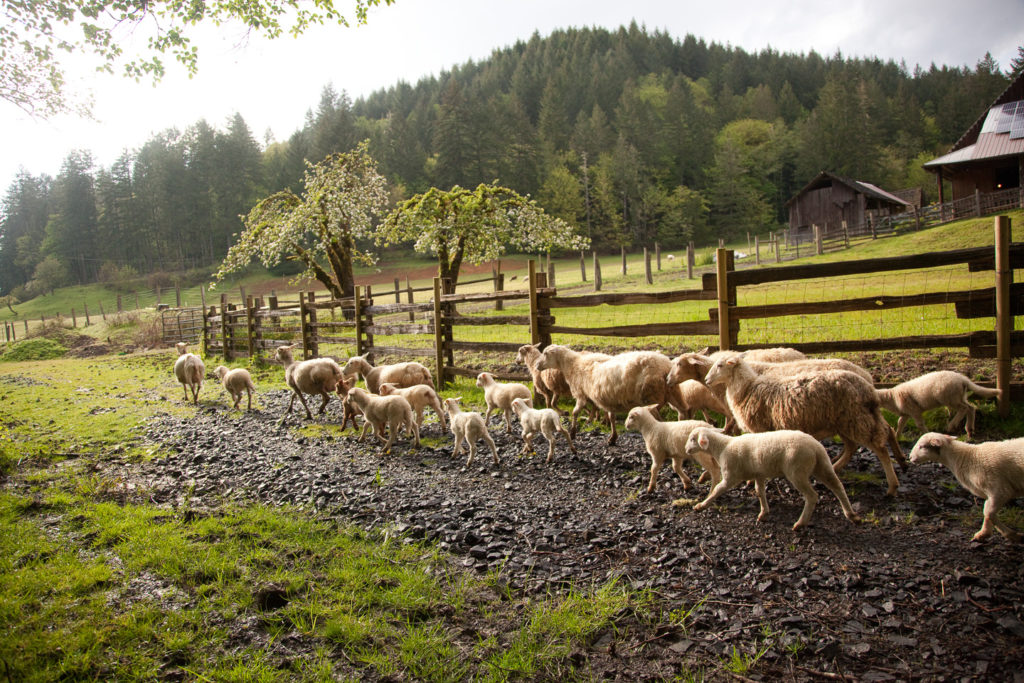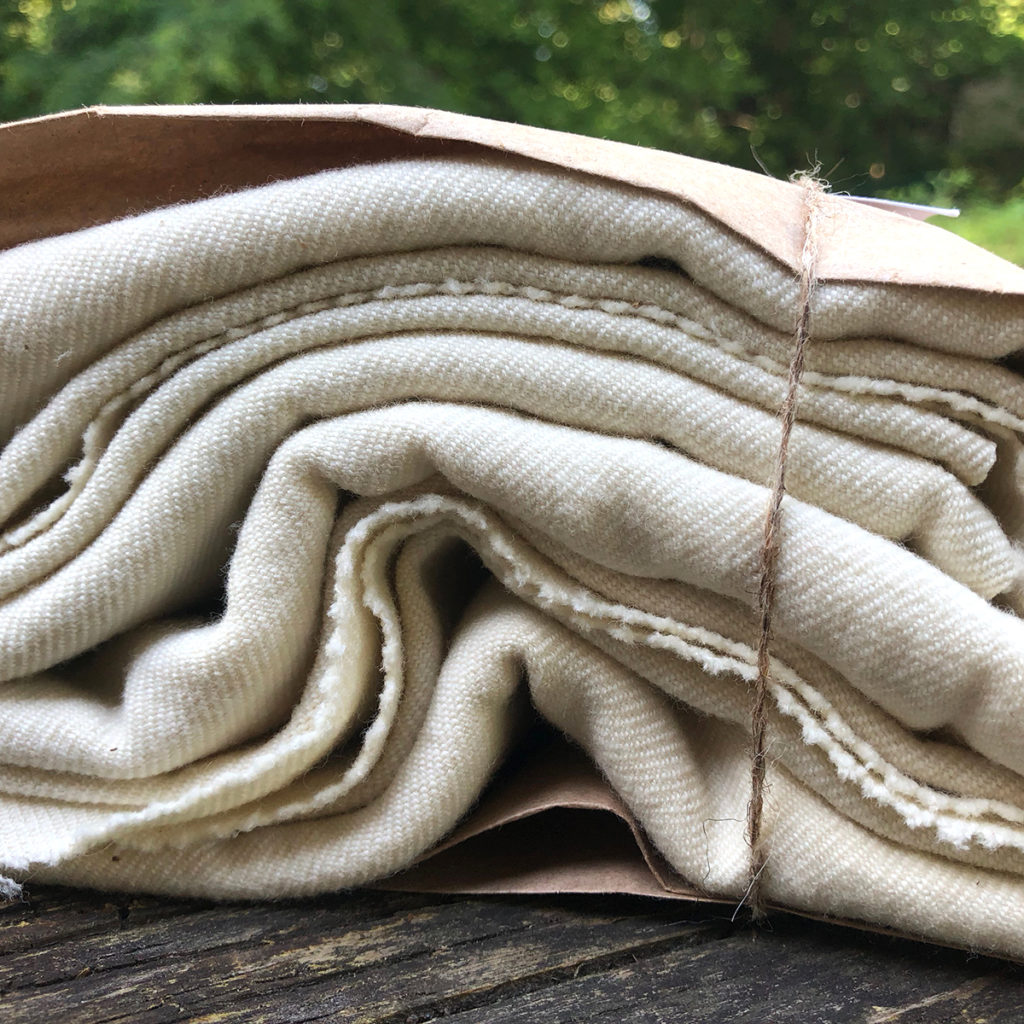By Mari Stuart, Project Grounded | Monday, Oct. 1, 2018 –
Fiber farmers stand at a unique juncture of agriculture on the one hand and the world of textiles and clothing on the other.
If you are a fiber farmer, you’re already doing important work to promote a more sustainable textile industry. Whether your operation involves sheep, alpaca, goats, llama, or rabbits, you are growing and helping to promote natural fibers as opposed to synthetic fibers, which are fossil-fuel based and take hundreds of years to biodegrade. Depending on where your fiber goes, you can also contribute to more ethical, local, and domestic alternatives to fast fashion.
But fiber producers can also become leaders in helping to shift agriculture’s climate impact, while at the same time adding to their farm’s differentiation and story, and therefore the market value of their product.
Regenerative agriculture
Regenerative agriculture, sometimes called “carbon farming,” is to a toolkit of farming and grazing practices that rebuild soil organic matter and increase soil biodiversity. In the process, they improve the rate at which the soil can draw down and store carbon from the atmosphere.
As The Carbon Underground’s definition says,
Regenerative agriculture improves soil health, primarily through the practices that increase soil organic matter. This not only aids in increasing soil biota diversity and health, but increases biodiversity both above and below the soil surface, while increasing both water holding capacity and sequestering carbon at greater depths, thus drawing down climate-damaging levels of atmospheric CO2, and improving soil structure to reverse civilization-threatening human-caused soil loss.
What exactly regenerative farming looks like in practice depends on the particular farm enterprise. For example, livestock farmers – primarily of meat and dairy cattle – have adopted managed rotational grazing systems that reinvigorate soil, pasture, and animal health. For grain farmers, the appropriate practices include low-till, no-till, and new perennial grains that do not require annual tilling. No-till growing methods have also worked successfully on vegetable farms.
A 1% increase in soil organic matter equals an average of 10 tons of below-ground carbon stored in the soil, per acre.
All of these practices enhance soil biology and stimulate root growth, as well as help to retain and increase organic matter and carbon in the soil: A 1% increase in soil organic matter equals an average of 10 tons of below-ground carbon stored in the soil, per acre. In a time when excessive CO2 levels in the atmosphere are threatening the stability of our climate, then, agriculture presents a solution that, if applied at a large scale, could really make a difference.
Regenerative practices on a fiber farm
But what about fiber farming? The primary regenerative practices that apply to fiber farms are:
- Compost application on pasture
- Silvopasture (planting timber or nut trees on pasture)
- Managed rotational grazing
Additional appropriate practices may include conservation tillage, pasture cropping, planting windbreaks and productive buffers, and creek restoration, but let us focus on the first three.
Compost application
Research by the Marin Carbon Project in California showed that a single application of a ½-inch layer of compost on pasture increased soil carbon sequestration rates by at least 1 ton per hectare per year for 30 years – without re-application. As the compost decomposes, it acts as a slow-release fertilizer, also increasing pasture productivity and the soil’s water-holding capacity.
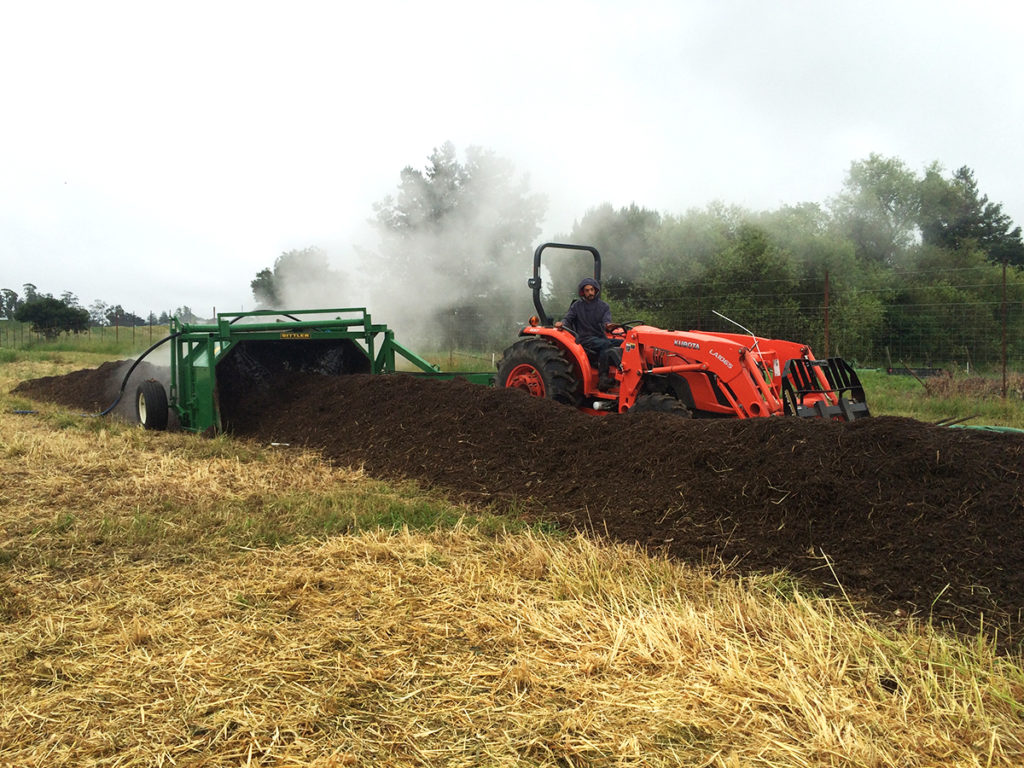 WINDROW COMPOST
WINDROW COMPOST
Fibershed, a California non-profit dedicated to developing regional and regenerative fiber systems, has collaborated with Marin Carbon Project on this research and provides support for fiber farmers in the region who want to develop carbon farming plans for their land. Fibershed has provided support for fiber farmers with covering the costs of the massive amounts of compost required, as well as with ongoing monitoring.
Silvopasture
Silvopasture is the intentional combination of pasture and trees (usually for timber or nut crops).
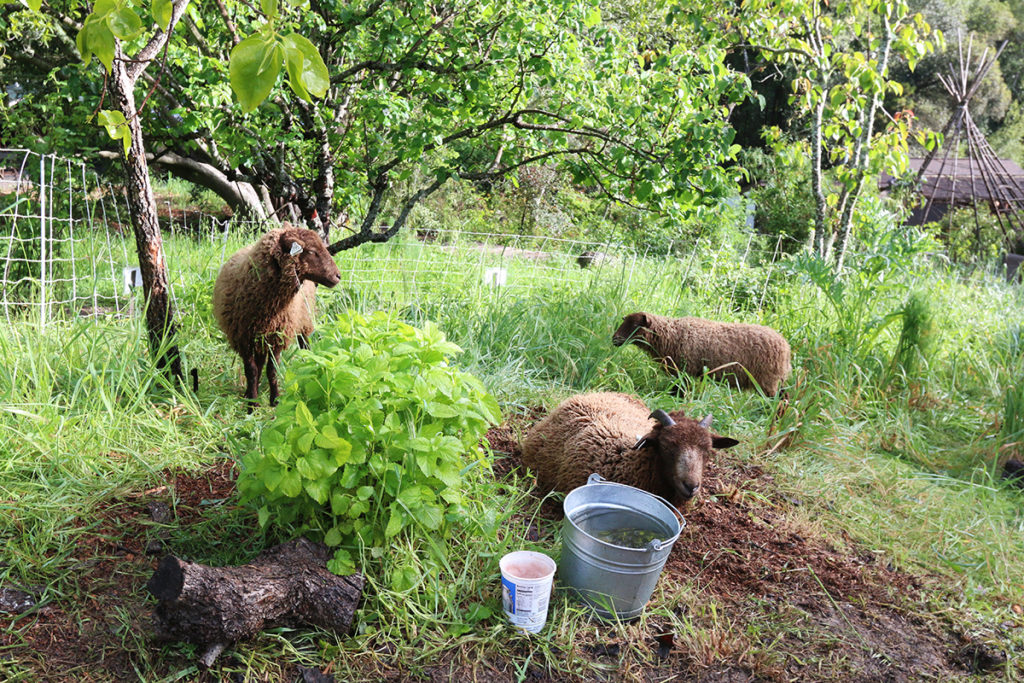
SHEEP GRAZING IN AN ORCHARD
According to the Carbon Farming Solution by Eric Toensmeier, silvopasture ranks as the most effective farming practice for sequestering large amounts of carbon in the soil. The combination of the natural disturbance caused by the animals’ hooves and nibbling, the nutrients from their manure, and the perennial root systems of trees all in close proximity together give a massive boost to soil biology and the building of soil organic matter.
Oaks, chestnuts, black poplar, and honey locust are all excellent silvopasture trees for the Carolinas. The young tree saplings have to be protected with fencing until they are above the browse line.
Managed rotational grazing
In managed rotational grazing, the animals are moved through fenced paddocks according to an intentional and planned system. Grazing management plans try to align the farm’s livestock carrying capacity with ecological site considerations for maximum pasture and animal health. This involves increasing pasture divisions and improved pasture rotations to allow longer rest periods for each paddock.
FLOCK OF SHEEP RUNNING
From Carbon-Farmed Pasture to Climate-Beneficial Clothing
What’s exciting about regenerative fiber farming is not only its potential to dramatically improve soils and stabilize the climate, but also its capacity to inspire and mobilize people, as well as revive regional economies and textile industries as a result.
Indeed, there is an economic incentive to explore regenerative fiber farming practices. As mentioned above, increasing the soil’s organic matter and carbon content also increases its overall health and productivity, and therefore also animal health and productivity. Moreover, the concept of “climate-cooling” wool has captured the imagination of the consumer and might help to differentiate the fiber products in ways that concretely add value.
THE “CLIMATE-BENEFICIAL CLOTH” PRODUCED BY FIBERSHED
Fibershed has created a “Climate-BeneficialTM Wool” certification for wool grown on fiber farms with established carbon farming plans. Last year, they rolled out a regionally grown and produced cloth, Community Supported Cloth, woven of such wool. You can read more about this pioneering project, and the story of a garment made out of it, on Project Grounded’s blog.
“The concept of ‘climate-cooling’ wool has captured the imagination of the consumer and might help to differentiate the fiber products in ways that concretely add value.”
Fibershed is also working with major clothing manufacturers to bring to market new “climate-beneficial” products. The North Face has taken the lead with its Cali Wool collection, as it now includes a beanie, a scarf, and jackets.
This “climate-beneficial” clothing will, Fibershed hopes,
“Become the new standard in a world looking to rapidly mitigate the effects of climate change. We see a nourishing tradition emerging that connects the wearer to the local field where the clothes were grown, building a system that can last for countless generations into the future.”
At CFSA’s Sustainable Agriculture Conference in November, I will facilitate a workshop, “Regenerative and Climate-Beneficial Fiber Farming”, that will cover regenerative pasture management practices in more detail. We will also look at a sample carbon farming plan for a small sheep and goat farm, and discuss the applicability of these strategies – and possible funding sources – in the Carolinas.
As outlined above, Mari Stuart will present on regenerative pasture management practices in fiber farming at this year’s Sustainable Agriculture Conference, on Sunday, November 11th, during Workshop Session F, from 10:15 – 11:30 a.m. We hope to see you there!
 Mari Stuart (Ph.D.) is an ecological designer and educator living in Asheville, N.C. She is the founder of Project Grounded, which helps climate-conscious consumers to engage with regenerative agriculture through their daily lifestyle choices.
Mari Stuart (Ph.D.) is an ecological designer and educator living in Asheville, N.C. She is the founder of Project Grounded, which helps climate-conscious consumers to engage with regenerative agriculture through their daily lifestyle choices.
Lead image by Shawn Linehan. Rest of the images by Mari Stuart.


